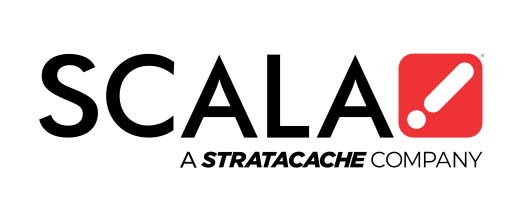SaaS has proven to be a cost-effective system across numerous industries and applications. The need for innovation, agility, flexibility and speed in the evolving business environment increases the demand for SaaS-based solutions.
In this article, we discuss the differences between digital signage m-SaaS and digital signage SaaS, and why these distinctions matter.


Content management services
Digital signage SaaS provides a cloud-based solution for customers and offers content management tools on a subscription basis. Digital signage m-SaaS goes a step further and provides value-added service by supporting content creation, management and scheduling. This hassle-free approach allows customers to focus on their core business by eliminating the need to create their own visual designs and manage content.
Additional support
Besides offering a pay-per-use model that reduces initial costs associated with the development, installation and maintenance of software, digital signage m-SaaS gives additional support by remotely managing customers’ digital signage networks. This frees up valuable time needed to set up and manage the digital signage system and enables the in-house IT staff to focus on other more critical tasks.
24/7 assistance available
While digital signage SaaS offers the convenience for users to fix issues from any location with internet connectivity, digital signage m-SaaS brings this convenience up a notch by offering round-the-clock monitoring and remote assistance. When SaaS solutions falter, they can expose the company to security risks. A managed service provider (MSP) will monitor all solutions and will alert customers if there are issues with any of the products. This ensures that the software system is operating at 100% uptime, increasing efficiency and productivity.
Integration with multiple SaaS systems
An organization may have several different SaaS solutions to support the respective departments. Those solutions have to be integrated and supported. An MSP will be able to integrate these SaaS products together, ensuring that they work well together, in a way that SaaS providers may not be able to help with. The more efficiently these systems work together, the better they will serve the company and its productivity.
Faster implementation
The installation of new programs or technologies can take a long time when customers are new to the technology. Implementation requires training and updates can lead to downtime and security weaknesses. With digital signage m-SaaS, all these issues are taken care of by the MSP, who is well equipped with the expertise and capability to help customers execute their SaaS application promptly.
Conclusion
Businesses in Asia-Pacific are trying to maintain cost and functionality for their continuously changing business requirements. Digital signage m-SaaS is an efficient and convenient solution to help enterprises drive powerful digital marketing by providing complete support on content creation, management and scheduling.
Check out Scala’s new offering – Scala m-SaaS – the comprehensive solution to manage all your digital signage needs.
Esther Chew is the Sr. Manager – Corp Comm & Marketing at STRATACACHE Asia-Pacific and is responsible for developing and implementing the internal and external communications strategy and programmes across Asia-Pacific. She drives the company’s corporate image and brand messaging through integrated and strategic communications leveraging various platforms such as executive communication, client communication, digital marketing, media relations and B2B events.


